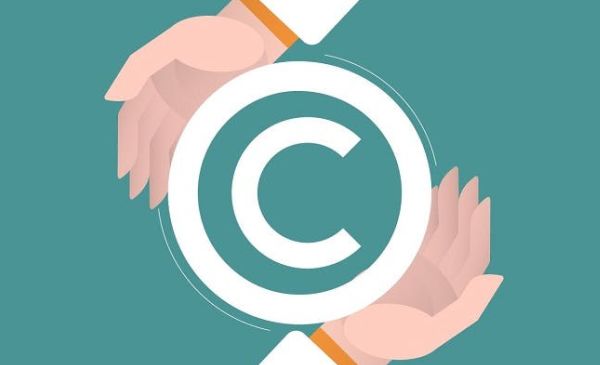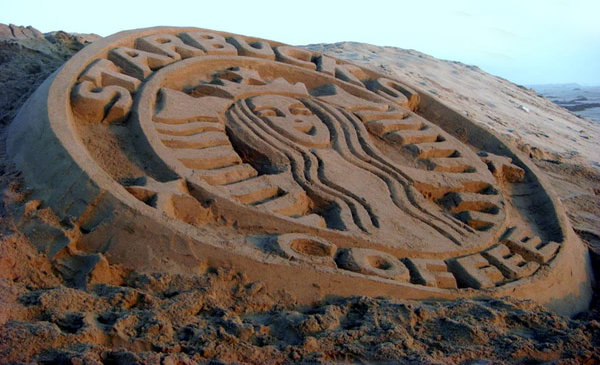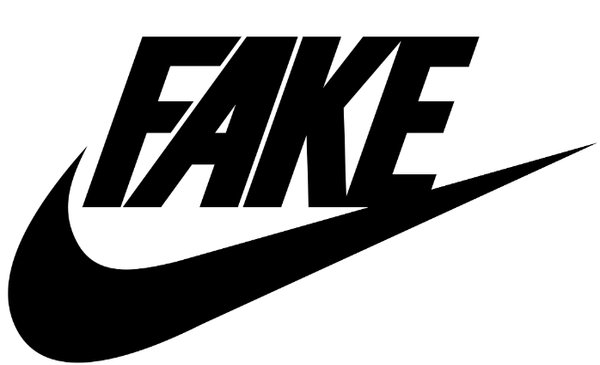Before you can begin to understand copyright—that invisible but powerful and infinitely expandable concept that governs so many of our dealings with each other—you must first learn what it is not.
Two of the things that copyright is not are trademarks and patents. These three forms of intellectual property are more like cousins than triplets, but lots of people, even lawyers and judges, confuse them.
Copyrights Compared To Trademarks And Patents
Although all three protect products of the human imagination, copyrights, trademarks, and patents are distinct but complementary sorts of intellectual property. Each is governed by a different federal law. The US patent statute originates in the same provision of the Constitution that gives rise to our copyright statute. Our federal trademark statute originates in the “commerce clause” of the Constitution, which gives Congress the power to regulate interstate commerce. Only our federal government regulates copyrights; copyright registrations are granted by the Copyright Office, which is a department of the Library of Congress. Similarly, only the federal government can grant a patent. However, although the federal government grants trademark registrations, so do all the fifty states.
Copyrights
Since January 1, 1978, in the United States, a copyright is created whenever a creator “fixes” in tangible form a work for which copyright protection is available. Under most circumstance, a copyright will endure until seventy years after the death of the creator of the copyrighted work; after copyright protection expires a work is said to have fallen into the “public domain” and anyone is free to use it. Registration of a copyright enhances the rights that a creator automatically gains by the act of creation, but it is not necessary for copyright protection. The chief limitation on the rights of copyright owners is that copyright protects only particular expressions of ideas rather than the ideas themselves. This means that several people can create copyrightable works based on the same idea; in fact, there is no infringement no matter how similar one work is to another unless one creator copied another’s work.
Trademarks
Trademarks are words or symbols that identify products or services to consumers. Unlike a copyright, in which the creator has protectable rights from the inception of the copyrighted work, rights in a trademark accrue only by use of the trademark in commerce and then belong to the company that applies the mark to its products rather than to the person who came up with the name or designed the logo that becomes the trademark. Roughly speaking, a company gains rights in a trademark in direct proportion to the duration and the geographic scope of its use of the mark; ordinarily, the company that first uses a mark gains rights in that mark superior to any other company that later uses it for the same product or services. Unauthorized use of a trademark is “trademark infringement.”
As is the case with copyrights, registration enhances rights in trademarks but does not create them. It is generally easy to register a mark within a state, but federal trademark registration, which confers much greater benefits, is more difficult to obtain. Trademark rights last indefinitely; as long as a mark is used in commerce, its owners have protectable rights in it. (For more information about trademarks, see The Trademark Guide, by Lee Wilson, published by Allworth Press.)
Patents
A patent is a monopoly granted by the US Patent and Trademark Office (USPTO) for a limited time to the creator of a new invention. According to the Patent Office,
A patent for an invention is the grant of a property right to the inventor, issued by the United States Patent and Trademark Office. Generally, the term of a new utility or plant patent is twenty years from the date on which the application for the patent was filed in the United States or, in special cases, from the date an earlier related application was filed, subject to the payment of maintenance fees. Design patents are granted for ornamental designs used for nonfunctional aspects of manufactured items; design patents last fourteen to fifteen years from the date the design patent is granted, depending on when it was filed. US patent grants are effective only within the United States, US territories, and US possessions. Under certain circumstances, patent term extensions or adjustments may be available.
The right conferred by the patent grant is, in the language of the statute and of the grant itself, “the right to exclude others from making, using, offering for sale, or selling” the invention in the United States or “importing” the invention into the United States. What is granted is not the right to make, use, offer for sale, sell, or import, but the right to exclude others from making, using, offering for sale, selling, or importing the invention. Once a patent is issued, the patentee must enforce the patent without aid of the USPTO.
There are three types of patents:
1. Utility Patents may be granted to anyone who invents or discovers any new and useful process, machine, article of manufacture, or composition of matter, or any new and useful improvement thereof;
2. Design Patents may be granted to anyone who invents a new, original, and ornamental design for an article of manufacture; and
3. Plant Patents may be granted to anyone who invents or discovers and asexually reproduces any distinct and new variety of plant.
An inventor must meet very strict standards before the Patent Office will grant a patent for his or her invention; then, the inventor can stop everyone else from manufacturing the invention without permission or even importing an infringing invention into the United States, even if the infringer of the patent independently came up with the same invention.
No product name is protectable by patent law; a product name is a trademark and trademark protection is earned in the marketplace rather than being awarded like a patent. And no song, story, painting, or play can be patented; copyright gives writers and artists the right to keep others from copying their works, but not a complete monopoly on the creation or importation of similar works.
(For a more detailed discussion of patent law, see The Patent Guide, by Carl Battle, from Allworth Press, and consult the US Patent and Trademark Office website.
Requirements For Copyright Protection
Under the US copyright statute a work must satisfy three conditions to qualify for copyright protection. All three of these requirements must be met in order for the work to come under the copyright umbrella.
The three statutory prerequisites for protection are (1) the work must be “original” in the sense that it cannot have been copied from another work; (2) the work must embody some “expression” of the author, rather than consisting only of an idea or ideas; and (3) the work must be “fixed” in some tangible medium of expression.
Originality
The originality condition for protection leads to the apparent anomaly that two works identical to each other may be equally eligible for copyright protection. So long as neither of the two works was copied from the other, each is considered “original.” In the sense that it is used in the copyright statute, “originality” means simply that a work was not copied from another work rather than that the work is unique or unusual. Judge Learned Hand, a jurist who decided many copyright cases, summarized the originality requirement with a famous hypothetical example: “If by some magic a man who had never known it were to compose a new Keats’s Ode on a Grecian Urn, he would be an ‘author,’ and, if he copyrighted it, others might not copy that poem, though they might of course copy Keats’s.” For copyright purposes, the similarities between two works are immaterial so long as they do not result from copying.
This is reflected in Copyright Office practices and publications: “The Copyright Office does not compare deposit copies or check registration records to determine whether works submitted for registration are similar to any material for which a copyright has already been registered. The records of the Copyright Office may contain any number of registrations for works describing or illustrating the same idea, method, or system.”
Anyone who feels her copyright has been infringed by a similar work created by someone else must look to the courts for a remedy, in the form of a suit for copyright infringement, rather than to the Copyright Office, which makes no judgment as to originality of any work for which registration is sought.
Expression
The current copyright statute restates the accepted rule, often enunciated in copyright decisions, that copyright subsists only in the expression embodied in a work and not in the underlying ideas upon which the work is based. The statute says: “In no case does copyright protection for an original work of authorship extend to any idea, procedure, process, system, method of operation, concept, principle, or discovery, regardless of the form in which it is described, explained, illustrated, or embodied in such work.” This rule plays an important role in copyright infringement cases, because a judge often must determine whether the defendant has taken protected expression from the plaintiff or merely “borrowed” an unprotectable idea (or “procedure, process, system,” etc.).
Fixation
The US copyright statute protects works eligible for protection only when they are “fixed in any tangible medium of expression . . . from which they can be perceived, reproduced, or otherwise communicated, either directly or with the aid of a machine or device.” The statute deems a work fixed in a tangible medium of expression “when its embodiment in a copy or phonorecord, by or under the authority of the author, is sufficiently permanent or stable to permit it to be perceived, reproduced, or otherwise communicated for a period of more than transitory duration.”
This third requirement for copyright protection sometimes surprises people, who may not realize, for instance, that a new song performed at an open mike “writers’ night” or a dance routine presented in a talent show, although it is both original and contains a high proportion of protectable expression, is not protected by copyright until it is “fixed” within the definition of the copyright statute and that it can be legally (although not ethically) copied, word for word or move for move, by anyone who witnesses its performance. A song can be “fixed” by recording any intelligible version of its music and lyrics in any form or by reducing its melody to written musical notation that also includes its lyrics. Any piece of choreography can be “fixed” by videotaping it in sufficient detail to record the movements of the dancers or by use of a written system of choreographic notation.
Contributed to Branding Strategy Insider by: Lee Wilson, Attorney-At-Law. Excerpted from his new book The Copyright Guide, How You Can Protect And Profit From Copyrights, Allworth Press.
The Blake Project Can Help: The Brand Licensing Audit
Branding Strategy Insider is a service of The Blake Project: A strategic brand consultancy specializing in Brand Research, Brand Strategy, Brand Licensing and Brand Education




